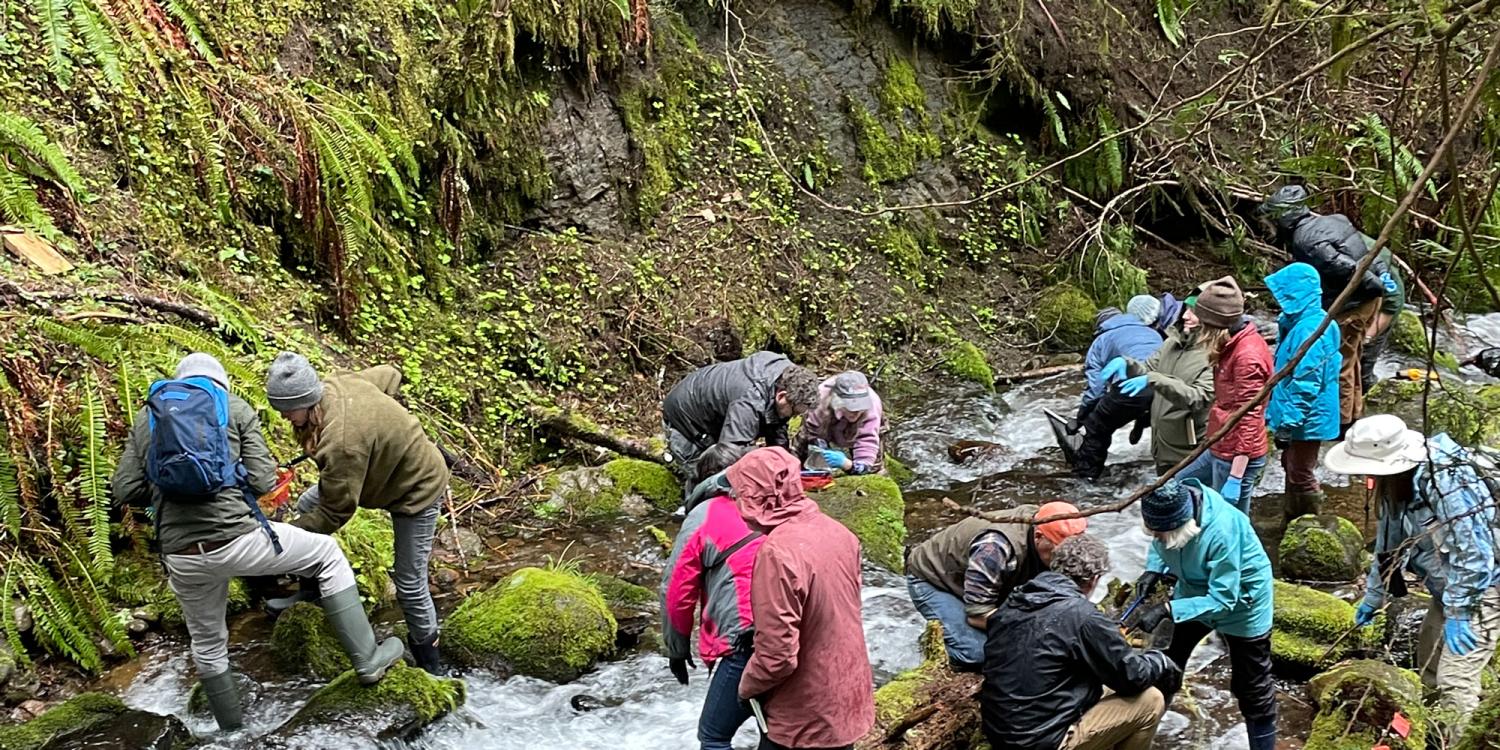
People from all over the world come to enjoy Oregon’s beauty and natural resources, but few residents have the knowledge that would deepen appreciation of the state such as sharing how animals, plants and insects work together to make it a special environment.
Many local, state and federal agencies and nonprofit organizations don’t have the resources to hire trained ecologists or to organize and maintain volunteers. That’s where Oregon State University Extension Service's Oregon Naturalist program comes in. After an intensive training course, volunteers work with community partners to help enhance their missions to teach the story of Oregon’s natural history.
Each year, Oregon Naturalist trainees take courses to learn about natural processes, ecosystems, wildlife, plants and natural resources management. The two-step training process is complete after an online course that provides a statewide view of natural resources topics and an in-person, place-based, often hands-on experience, which highlights local and regional ecology unique to certain areas of the state where participants volunteer. In return, 40 hours of volunteerism is required for certification, followed by at least 40 hours of service and eight hours of continuing education. Volunteering occus in four cagegories – community science, education and interpretation, land stewardship and program support.
Working with Extension colleagues, Jason O’Brien, Oregon Naturalist statewide coordinator, helped develop a mission to bring together a corps of knowledgeable, skilled and dedicated volunteers who enrich their communities and enhance public awareness of Oregon’s natural resources. Often Oregon Naturalist trainees start with a desire to volunteer but have no experience. The program introduces them to a variety of opportunities, eases intimidation and helps them engage with community partners like the Oregon Department of Fish and Wildlife, the High Desert Museum, Salem Audubon, Hood River Watershed Group, the Willamette Valley National Wildlife Refuge Complex and the Southern Oregon Land Conservancy. Volunteers come away with the confidence to pass along their new-found knowledge.
Volunteer projects include helping to restore riparian vegetation along a stream for a watershed council or leading people through a lesson about the amazing adaptions and ecosystem services of the American beaver.
In 2022, O’Brien furthered his objective to form a chapter-driven program by piloting the first OSU Extension Oregon Naturalist chapter in Oregon’s mid-Willamette Valley. Chapters allow more networking among volunteers to keep them interested and enthusiastic. Already, chapter members have emerged as effective leaders and ambassadors of the program. Rather than a top-down approach, chapters provide the space and freedom for volunteers to lead and contribute their talents to advance the Oregon Naturalist misson, including planning and leading Oregon Naturalist field course trainings for new participants.
As a result of the Oregon Naturalist program 7,416 hours of volunteer service were reported in 2022 with 134 community partners, a development that has helped these partners recogonize the value of the program and continue their participation and support. To date, 261 people have been given the designation of Certified Oregon Naturalist.